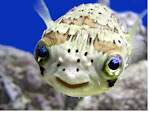Wow, this is one incredible floating, working, functioning town.

I entered this town as an outsider, not knowing the slightest of nautical terminology, military protocol, or how a ship this large functions. So i'd like to take a bit of time to share some of the things I've learned along the way.
First of all the concept of the USNS MERCY (T-AH 19) is not novel, in fact there is a long line of predecessors that lie in the veritable wake of this white washed hospital ship with a red cross stamped on its hull. In fact, there were two previously commissioned Mercy ships as early as mid 1918. The first Mercy (AH 4) was first an army troop transport during the first nine months of WWI, then renamed MERCY and converted to a hospital ship and commissioned in 1918. Upon commissioning, the ship made 4 round trips to France, returning 1,977 casualties in that first year. The second Mercy (AH 8) commissioned in 1944 and deployed to the Battle for Leyte Gulf in the Republic of the Philippines, embarking 400 casualties, transporting wounded to New Guinea. Later it aided in service in the Okinawa campaign, arriving in Hagushi Beach and transferring wounded soldiers to Saipan, Marianas despite heavy air fire and kamikaze attacks. Later on it was The tradition traces back to the first commissioned ship for hospital purposes, the USS Red Rover which sailed from 1862 to 1865. This hospital aid ship proved to be a benefit in the field and subsequently spawned a whole series of ships. Inspired by the "Prayer From the Navy Wounded" that Navy Commander J. M. Stuart wrote while stranded and wounded on a tropical island, each ship then on was named from words within this prayer. It reads:
I am wounded, lying in the tropic of darkness.
Who will deliver me, oh, God? Is there no HOPE?
Is there no present SOLACE from the flame that burned me?
No Heaven-Blessed RELIEF for aching steel-torn flesh?
Surely the All-highest in His SANCTUARY,
He who is my ever-present CONSOLATION,
My REFUGE who is BENEVOLENT indeed,
Will send me one SAMARITAN to bind my wounds,
For I have sang His MERCY log as Christians should,
Have known him BOUNTIFUL, yea, my enduring life,
Have dwelt before Him in old Faith's TRANQUILITY,
Rescue me, Lord, COMFORT me in my deep stress.
Salve my wounds, bear me up to some sailor's HAVEN
On to the sweet REPOSE that Thou has promised me!

The following are the dates and names of the 22 hospital ships deployed:
- 1862-1865 USS Red Rover
- 1898-1921 USS Solace (AH-2)
- 1908-1910 USS Relief (AH-1)
- 1918-1921 USS Comfort (AH-3)
- 1918-1934 USS Mercy (AH-4)
- 1920-1946 USS Relief
- 1942-1946 USS Rescue (AH-18)
- 1941-1946 USS Solace (AH-5)
- 1944-1946 USS Refuge (AH-11)
- 1944-1946 USS Hope (AH-7)
- 1944-1946 USS Samaritan (AH-10)
- 1944-1946 USS Bountiful (AH-9)
- 1944-1946 USS Comfort (AH-6)
- 1944-1946 USS Mercy (AH-8)
- 1945-1946 USS Tranquility (AH-14)
- 1945-1946 USS Sanctuary (AH-17)
- 1945-1947 USS Haven (AH-12)
- 1945-1947 USS Benevolence (AH-13)
- 1945-1950 USS Repose (AH-16)
- 1945-1955 USS Consolation (AH-15)
- 1987-Pres USNS Comfort (T-AH-20)
- 1986-Pres USNS Mercy (T-AH-19)

Originally the Mercy was an Oil Tanker originally built in San Diego in 1976, was later purchased and converted into a hospital ship by the Navy in 1984. Thus the design of the boat is divided into 7 "zones" which are, for the most part, non-communicating vertical compartments that span the ship from bow to stern. This make travel laterally a bit difficult because you have to climb the stairs to the 'main' floor in order to travel the length of the ship, then take your desired zone stairwell from there.
Prior to its current mission in the Pacific Partnership 2008, the current Mercy T-AH 19 ship served in 1987 in the Philippines and South Pacific as a training and humanitarian aid ship. Next in 1990 the Mercy was activated to support Operations Desert Shield/Desert Storm in the Arabian Gulf. The Mercy supported allied forces, admitting 690 patients, performing 300 surgeries, and and 21 US and 2 Italian POWs. In January 2005 the Mercy reached Southeast Asia as an aid relief vessel after the tsunami caused damage throughout the coastline, treating 9,500 patients, and 19,512 medical procedures in Banda Aceh - Sumatra, Alors - Indonesia, and Dili - Timor Leste. Quickly thereafter in March the Mercy was able to lend its services to Indonesia after the 8.7 earthquake devastated Nias island, performing 123 surgeries, 19,000 medical procedures. On its way home a stop was made to Manam islanders who fled to Papua New guinea after a major volcanic eruption on their island. In 2006 the Mercy again did a humanitarian tour, stopping in the Philippines, Bangladesh, Indonesia, and Timor Leste, taking care of 60,000 patients. With such a positive track record and impressive numbers in terms of the ships abilities to take care of people internationally it is no surprise that the Mercy yet again was commissioned for another mission.
The only other hospital ship still in commission is the USNS Comfort (T-AH-20) which resides on the East coast, with a similar resume of service.
On this mission the Mercy left San Diego on April 30 with the itinerary to from San Deigo, CA stopping in Manilla - Philippines, Dili - Timor Leste, Port Moresby - Papua New Guinea, Chuuk - Micronesia. And yet again the mission includes providing healthcare, preventive and environmental medicine, engineering services, veterinary medicine, and education to each of these partner nations.

Goals:
- Primary Mission: rapid, flexible, and mobile acute medical and surgical services to support the department of defense.
- Secondary Mission: provide mobile surgical hospital service for use in disaster or humanitarian relief or limited humanitarian care incident to these missions or peacetime military operations.
Some statistics and random info:
- The ship is under the command of Commodore Kearns.
- Motto: "Steaming to Assist"
- Time to activate: 5 days
- Staffing: 61 civilian and 1,214 military
- Length: 894 feet
- Displacement: 69,360 tons
- Maximum Speed: 17.5 knots
- Propulsion: Two turbine, two boiler, 24,500 horsepower
- Facilities: 1,000 hospital beds (80 Intensive Care, 280
 Intermediate Care, 500 Limited Care, 20 Recovery, 120 Light Care), 12 operating rooms, 2 CT scans, radiological services, medical laboratories, optometry lab, medical laboratory plus satellite lab, pharmacy, oxygen and nitrogen producing plant, Isolation ward, physical therapy and burn care, emergency room, sterile processing, morgue.
Intermediate Care, 500 Limited Care, 20 Recovery, 120 Light Care), 12 operating rooms, 2 CT scans, radiological services, medical laboratories, optometry lab, medical laboratory plus satellite lab, pharmacy, oxygen and nitrogen producing plant, Isolation ward, physical therapy and burn care, emergency room, sterile processing, morgue.
- 2 helicopters, 2 "band aid" boats, multiple soft person mover boats
- Chapel, Computer labs, Library, game rooms, movie theaters, post office, barber shop, 3 gyms, etc
- Berthing [read: dorm] Rooms contain 2 things: racks [read: bunk beds] and lockers. There are 37 racks, each 3 beds tall = 111 beds per berthing. There are 8 such berthings in the purple stair case zone. The beds cramped to say the least, with dimensions approximately 65" x 30" x 30" (or 6.5' x 2.5' x 2.5').
- This ship is larger than ANY shore-based naval medical facility.
- Water is distilled in evaporators when underway, giving the boilers fresh water first over the crew.
Bon Voyage,
~Nic













